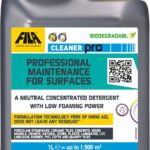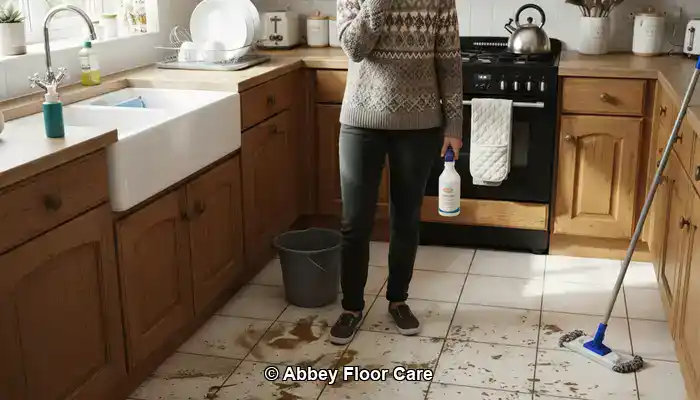
Last Updated on November 8, 2025 by David
Key Strategies for Successfully Resealing Your Porcelain Tiles
- While porcelain tiles may not always require a surface seal, it is imperative to regularly reseal grout lines at intervals of 1 to 2 years. This routine task is essential for preventing staining and moisture absorption, thereby ensuring the long-lasting durability and performance of your flooring investment.
- High-traffic areas, including kitchens and hallways, necessitate more frequent resealing than less frequented spaces like guest bathrooms. It's crucial to customize your maintenance schedule based on the specific functionality and usage of each room to protect your flooring effectively.
- Utilizing the water drop test offers a simple yet effective method to determine the need for resealing. If water droplets absorb into the tile or grout, it signifies that a resealing is overdue.
- Choosing the right sealer is crucial, as it should align with both the tile type and its specific location. For instance, penetrating sealers are highly recommended for unglazed porcelain and grout to ensure effective protection.
- Avoid common pitfalls like over-sealing, using harsh cleaning agents, or neglecting grout lines. Such oversights can undermine the resealing process, leading to potential damage and decreased effectiveness.
Discover the Wide Variety of Porcelain Tiles Available in the Market
Professional Recommendations: Top Products for Daily Grout Maintenance and Cleaning

Fila Pro Floor Cleaner
|
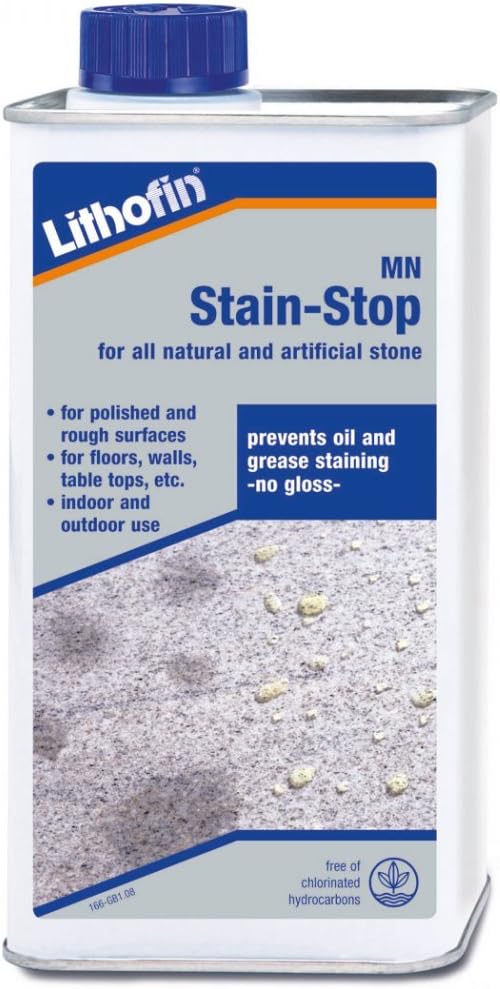
Lithofin MN Stain Stop
|

Vileda H2PrO Spin Mop System
|
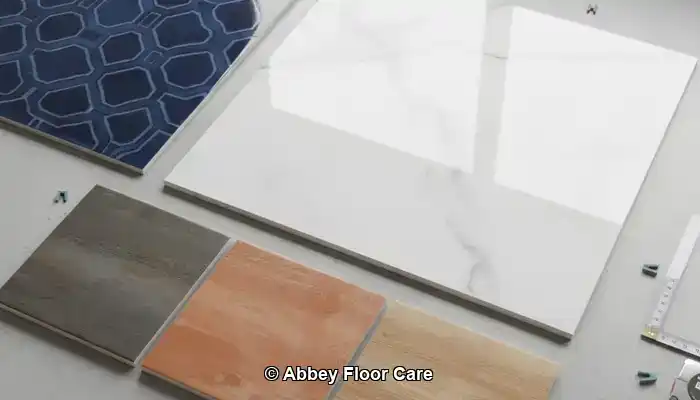
Distinguishing Between Glazed and Unglazed Porcelain Tiles: What You Need to Know
Porcelain tiles come in two main finishes: glazed and unglazed. The glazed variant boasts a protective layer that is heat-fused onto its surface, enhancing its resistance to stains and providing a diverse range of aesthetic options. Conversely, unglazed porcelain features a natural, matte finish that appeals to many due to its exceptional slip resistance and durability, particularly in high-traffic settings. Although glazed tiles generally do not necessitate sealing, unglazed tiles, due to their increased porosity, require regular resealing to safeguard against moisture absorption and staining.
Clarifying the Key Differences Between Ceramic and Porcelain Tiles
Despite the frequent confusion between ceramic and porcelain tiles, they have significant differences in terms of density, water absorption, and overall durability. Porcelain tiles are fired at elevated temperatures, resulting in a denser and less porous material compared to ceramic tiles. This property makes porcelain particularly advantageous for spaces frequently exposed to moisture, such as kitchens and bathrooms. Grasping these distinctions enables homeowners to establish effective sealing routines and select appropriate cleaning products tailored to each type of tile.
Exploring the Rising Popularity of Porcelain Tiles in UK Homes
The increasing prevalence of porcelain tiles in UK homes is largely due to their minimal maintenance demands, aesthetic flexibility, and compatibility with underfloor heating systems. Their ability to convincingly emulate natural stone or wood, while offering superior durability, makes them an ideal choice for both modern and traditional interiors. Homeowners value porcelain for its lasting performance, particularly when complemented by diligent sealing and maintenance practices.
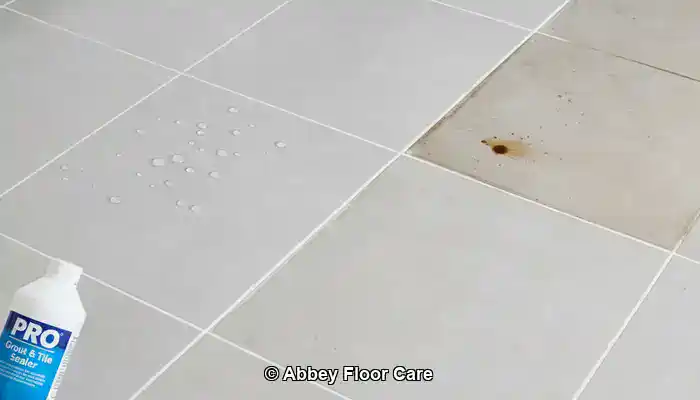 Understanding the Importance of Resealing for Extending Tile Lifespan
Understanding the Importance of Resealing for Extending Tile Lifespan
Grasping the Care Requirements for Grout and Tile Surfaces
While porcelain tiles are typically low-porosity, especially when glazed, the grout lines remain highly absorbent and prone to staining. Although the tile surface can resist moisture, the grout is susceptible to absorbing spills, dirt, and cleaning residues. Regular resealing plays a crucial role in creating a protective barrier that prevents grout from discolouration and erosion, particularly in areas like kitchens and bathrooms, where spills frequently occur.
Boosting Moisture Resistance and Minimizing Stains
Regular resealing significantly enhances moisture resistance and reduces the chances of stains penetrating porous surfaces. In busy areas such as hallways and utility rooms, resealing becomes vital for maintaining the floor's appearance and preventing long-term damage. Homeowners who adhere to a consistent resealing schedule can prolong the lifespan of both the tile and grout, especially in spaces exposed to water or cleaning agents, ensuring a clean and attractive environment.
Preserving Aesthetic Quality and Ensuring Slip Resistance
Over time, tiles that remain unsealed or inadequately sealed may lose their original finish, resulting in a dull or uneven look. Regular resealing helps maintain the surface's shine and can improve slip resistance when the right product is utilized. This is particularly critical in areas such as bathrooms and entryways, where wet conditions increase the risk of slips and falls. A well-maintained seal not only contributes to safety but also enhances the overall aesthetic appeal of your flooring.
Key Factors That Influence Resealing Frequency for Your Tiles
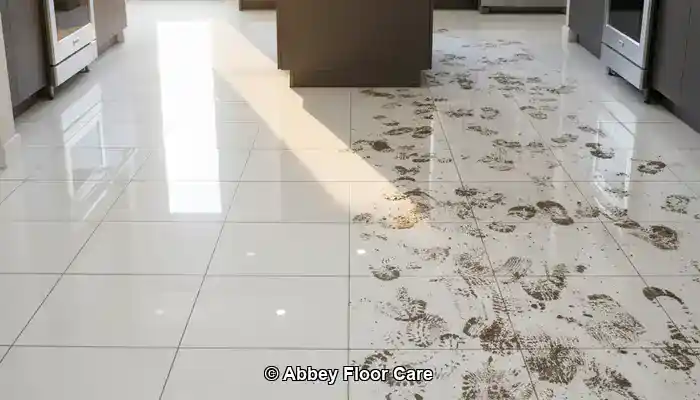
How Foot Traffic and Room Usage Impact Resealing Requirements
Areas with heavy foot traffic, such as hallways and kitchens, experience quicker wear, exposing grout to elevated levels of dirt and moisture. In contrast, low-traffic rooms, such as guest bathrooms or spare bedrooms, may not require resealing as frequently. Homeowners should assess each room on its own merits rather than relying on a standardized resealing schedule, ensuring appropriate care for every area.
The Influence of Cleaning Products on Surface Wear and Tear
The use of aggressive or acidic cleaners can hasten the deterioration of sealers, particularly within grout lines. Even products deemed safe for tiles can strip protective layers if misapplied or overused. It is advisable to use a gentle, pH-neutral cleaner to preserve the seal and extend the intervals between resealing, keeping your tiles in optimal condition.
How Indoor Climate and Airflow Affect Sealer Lifespan
Humidity levels and air circulation play pivotal roles in determining how quickly grout and tile surfaces dry after cleaning. Insufficient ventilation can prolong moisture exposure, potentially compromising the effectiveness of sealers over time. Homes equipped with proper ventilation and balanced humidity levels usually maintain sealed surfaces in better condition for longer durations, particularly in bathrooms and utility areas.
Need Help with Your Tiles? Contact Us for Expert Assistance.
Identifying When Your Tiles Require Resealing
Recognizing Signs of Wear or Absorption in Your Tile and Grout
Visible changes in grout color, increased staining, or a dull appearance of the tile surface often indicate that the seal has weakened. In high-usage areas, this wear can accumulate gradually and may go unnoticed until dirt becomes harder to remove or moisture lingers after cleaning, signaling the need for immediate action.
Utilizing the Water Drop Test for Effective Assessment
An easy and effective way to evaluate seal integrity is through the water drop test. Simply place a few droplets of water onto the tile and grout, observing whether they bead or absorb. If the water quickly penetrates or leaves a dark stain, this indicates that resealing is urgently needed. This test proves to be particularly reliable on unglazed porcelain and grout lines exhibiting higher porosity.
Identifying Surface Dullness and Grout Discoloration as Warning Signs
Tiles that appear chalky or show an uneven sheen frequently indicate a loss of their protective coating. Similarly, grout that darkens or features patchy staining often signifies seal degradation. These visual indicators are crucial for homeowners to determine if resealing is necessary, even when the floor appears clean and well-maintained.
Choosing the Right Sealer for Your Porcelain Flooring
Understanding the Differences Between Penetrating and Surface Sealers
Penetrating sealers absorb into the tile and grout, creating a protective barrier without altering the surface appearance. These sealers are especially effective for unglazed porcelain and grout lines, providing moisture resistance while maintaining a natural look. On the other hand, surface sealers create a visible layer and may enhance shine or texture; however, they should be chosen carefully as they can affect slip resistance.
Criteria for Selecting Safe Sealers for Tiles and Grout
Not every sealer is appropriate for both tile and grout. Homeowners should opt for products specifically labeled as safe for porcelain and compatible with cement-based grout. Using the wrong type can lead to hazing, residue build-up, or diminished effectiveness of the seal. Always check product labels to ensure compliance with UK safety standards for optimal long-term performance.
What to Look for in Eco-Friendly and Pet-Safe Sealers
Many modern sealers are water-based and low in volatile organic compounds (VOCs), making them safer for indoor environments. For households with pets or children, selecting a non-toxic, eco-friendly sealer reduces exposure risks during application and drying. Such products often require less ventilation and are easier to clean up after use, ensuring a safe application process.
Comprehensive Guide to Resealing Your Tiles
Preparing Surfaces for Resealing Through Detailed Cleaning
Before resealing, it is vital to thoroughly clean the tile and grout using a pH-neutral cleaner. Ensure that all dirt, oils, and residues are completely removed to promote optimal adhesion of the sealer. Allowing the floor to dry entirely is crucial; any moisture trapped beneath the sealer can lead to hazing or uneven application, ultimately compromising the effectiveness of the seal.
Tools and Techniques for Effective Sealer Application
Utilize a soft applicator pad, microfiber cloth, or brush tailored to the product and surface type for application. Apply the sealer evenly across the tile and grout, working in manageable sections to prevent unsightly overlap marks. Always follow the manufacturer's recommendations for coverage rates and avoid allowing excess product to pool in grout joints, which can lead to uneven sealing.
Understanding the Importance of Proper Drying Times and Adequate Ventilation
Most sealers necessitate a drying time of 2 to 4 hours before allowing light foot traffic and up to 24 hours for complete curing. Enhance air circulation by opening windows or using fans, particularly in confined spaces. Avoid wet cleaning or placing rugs on the surface until the seal has fully cured to prevent imprinting or tackiness, ensuring the longevity of the seal.
Resealing Timelines Based on Room Usage and Functionality
Resealing Requirements for Kitchens, Bathrooms, and Hallways
Kitchens generally require resealing every 12 to 18 months due to frequent spills, cooking residues, and high foot traffic. Bathrooms may follow a similar timeline, especially around showers and sinks where moisture levels are elevated. Hallways, depending on their specific usage, might need resealing every 18 to 24 months to guarantee the protection of grout and maintain the clarity of the surface.
Comparing Resealing Needs in Low-Traffic Versus High-Traffic Areas
In low-traffic areas like guest bathrooms or spare bedrooms, resealing every 2 to 3 years may be sufficient. Conversely, high-traffic zones such as entryways, kitchens, and utility rooms benefit from more frequent maintenance to uphold their appearance and functionality. Homeowners should tailor their resealing schedules based on the unique usage patterns of each space rather than relying on generic guidelines.
Seasonal Considerations for Optimal Resealing Conditions
Spring and early autumn present ideal conditions for resealing floors in the UK, as they offer moderate temperatures and adequate airflow. It's advisable to avoid resealing during periods of high humidity or extreme cold, as these environmental factors can adversely affect drying times and the overall efficacy of the product. Planning resealing around seasonal cleaning routines promotes consistency and supports the overall health of your flooring.
Avoiding Common Mistakes During the Resealing Process
The Risks Associated with Over-Sealing Your Tiles
Applying excessive amounts of sealer or resealing too frequently can lead to surface buildup, hazing, or sticky residues. This issue is particularly common with surface sealers, which create a visible layer that can trap dirt and moisture. Homeowners should adhere to manufacturer guidelines and only reseal once the previous layer has sufficiently worn down or failed to ensure optimal results.
The Consequences of Using Harsh Cleaners Prior to Sealing
Using acidic or bleach-based cleaning agents can compromise the integrity of the tile and grout, making it difficult for the sealer to bond effectively. Always choose a pH-neutral cleaner before resealing to ensure that the surface is clean and adequately prepared for treatment. Harsh chemicals may leave residues that can interfere with the sealing process, ultimately diminishing the effectiveness of the seal.
Highlighting the Importance of Sealing Grout Lines During Resealing
Grout, often the most vulnerable element of a tiled floor, is frequently overlooked during the resealing process. Neglecting to seal grout lines can lead to uneven protection and hastened staining. It is essential to use a small brush or targeted applicator to ensure that grout receives adequate coverage, especially in areas prone to spills, such as kitchens and bathrooms, to maintain their integrity.
Common Questions About Resealing Porcelain Tiles Answered
Can I Reseal My Tiles on My Own?
Absolutely! Many homeowners choose to reseal their porcelain tiles and grout independently using readily available products. The key to successful resealing lies in carefully following the instructions, utilizing tile-safe sealers, and ensuring that the surface is thoroughly clean and dry before application. DIY resealing is particularly effective in low-traffic areas or as part of a regular maintenance routine.
How Can I Tell if My Seal Has Failed?
The water drop test is an excellent method for assessing seal integrity. Simply place a few drops of water on the tile and grout, then observe whether they bead or absorb. If the water penetrates quickly or leaves a dark mark, this indicates that the seal has likely failed, suggesting that resealing is necessary.
Which Products Are Considered Safe for Use Around Pets?
Look for water-based sealers that have low VOC content and are explicitly labeled as non-toxic or pet-safe. These products help minimize exposure risks during application and drying, making them suitable for homes with pets or children. Always ensure proper ventilation and keep pets off the floor until the seal has fully cured to ensure their safety.
Is Resealing Necessary for Glazed Tiles?
Generally, glazed porcelain tiles do not require surface sealing; however, the grout between them can significantly benefit from regular resealing. In certain situations, a light application of penetrating sealer may be utilized to protect the grout without altering the tile’s finish, ensuring a cohesive and durable surface.
The Article How Often Should You Reseal Porcelain Tiles first found on https://www.abbeyfloorcare.co.uk
The Article Resealing Porcelain Tiles: How Often Should You Do It? appeared first on https://fabritec.org
The Article Resealing Porcelain Tiles: Frequency and Best Practices Was Found On https://limitsofstrategy.com
The Article Resealing Porcelain Tiles: Best Practices and Frequency Guide First Appeared ON
: https://ad4sc.com

